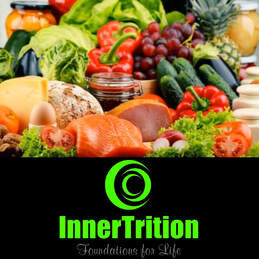 Many scientists believe that being hangry is a real thing, and not just a catchy hashtag. In fact, hunger causes physical changes similar to many emotions, including anger. Skipping breakfast or taking offense at someone who cuts you off in traffic both increase stress hormones and alter brain processes. The connection isn’t limited to anger either. Hunger can exacerbate other emotions like sadness and fear. Some researchers believe that the trouble is mostly a matter of being unaware that we’re hungry, which makes us more likely to blame our discomfort on someone or something outside of ourselves. For example, one study found that spouses who were hungry were more likely to stick pins in a voodoo doll that looked like their partner. Learn to take control of your hunger and your feelings. Try these ideas for bringing your body and brain back into balance. Managing Your Hunger The ability to recognize hunger signals varies greatly from one individual to another. Similarly, you may experience hunger more intensely than others depending on your lifestyle and metabolism. Using these strategies will help you manage your hunger: 1. Eat breakfast. If you become cranky while waiting for lunchtime, make breakfast a regular habit. Squeeze a nutritious meal into a busy morning by starting preparations the night before or eating something simple like a cup of Greek yogurt. 2. Carry snacks. Be prepared for traffic jams and long meetings by keeping healthy snacks in your car and office. Fill a cooler with fruit and cheese. Pack a desk drawer with nuts and whole grain crackers. 3. Pick real comfort foods. Do you indulge in donuts and French fries when you’re feeling down? Switch to treats that will nourish your brain better than sugar, unhealthy fats, and empty calories. Choose foods like nuts, berries, and salmon that are rich in vitamins B and D and can enhance your mood. 4. Increase your protein intake. A diet packed with protein and complex carbohydrates can help fight anger and depression by increasing your levels of serotonin. When you’re planning meals and snacks, include some choices from both groups like tofu and fish with vegetables and brown rice. 5. Stay on schedule. A consistent schedule may help if you sometimes forget to eat. Plan your day in advance and block out time to refuel. Managing Your Anger While eating is an obvious solution to being hangry, you’ll need other options when you’re in situations where that’s impossible. If you’re stuck in a traffic jam or concerned about the effects of chronic anger, try these strategies: 1. Boost your awareness. Just asking yourself if you’re hungry can reduce your irritation. You may find that you’re arguing with a coworker because you skipped lunch and not because they’re being uncooperative. 2. Think positive. Gratitude and optimism can help deflect anger. Look for humor in difficult situations. Focus on the admirable qualities in others. 3. Talk it over. Process your frustrations by talking about them with family and friends or a professional counselor. Guide the conversation towards creating solutions rather than complaining. 4. Advocate for yourself. You’re less likely to lose your temper if you know how to stand up for yourself effectively. Ask for what you need directly and tactfully. Set reasonable boundaries in relationships. 5. Listen to music. Any distraction can shift your attention away from what’s bothering you, and music is especially powerful. Create a soothing or uplifting playlist for when you’re tense. 6. Work out. For extra relief, listen to your music while you’re running through the park or lifting weights. Physical exercise relieves stress. 7. Hit pause. Anger can interfere with your judgment. Stop and think about the consequences before you say or do something you’ll regret. Say goodbye to being hangry. Enhancing your emotional awareness and avoiding excessive hunger will help you to stay happy and peaceful.
2 Comments
 The debate runs high when it comes to dietary decisions. Today’s societal attention on nutrition stems from a multitude of perspectives and opinions…not to mention the marketing and advertising around these views. One such controversial topic is: Is it better to be a vegetarian or a meat eater? Recently, Vegetarian diets continue to increase in popularity. Reasons for following a vegetarian diet are varied but include health benefits, such as reducing risk of heart disease, diabetes and some cancers, while others reasons do so with more ethical and environmental concerns in mind. For the purpose of this article, lets take a look from the health and nutritional biochemistry standpoint. Studies have shown that Vegetarians do appear to have decreased low-density lipoprotein cholesterol levels, lower blood pressure, lower rates of hypertension and type 2 diabetes than meat eaters. Vegetarians also tend to have a lower body mass index, lower overall cancer rates and lower risk of chronic disease. However some vegetarians may unwarily consume too much processed foods, which can be high in calories, sugar, fat and sodium and are often missing essential micronutrients. These are also some common misconceptions about a vegetarian diet:
Here are a few Pros and Cons of Vegetarian Diets Pros: Reduced risk of heart disease, hypertension, Type 2 diabetes Decreases risk of certain cancers Reduced risk of rheumatoid arthritis, kidney disease, gallstones Cons: Diets can be low in vitamin B12, Diets can be low in omega-3 fatty acids Does require special attention Some people may adopt vegetarian diets solely to lose weight. Some people may adopt vegetarian diets to mask an eating disorder Types of Vegetarian Diets: When people think about a vegetarian diet, they typically think about a diet that doesn't include meat, poultry or fish. But vegetarian diets vary in what foods they include and exclude and therefore must be fully understood when reviewing overall results listed above:
Lets start by taking a look at our anatomy and physiology. First, is our teeth that of a carnivore? In comparison to meat eating animals, they don’t seem as effective for ripping and grinding flesh. How about our digestive tract? Our guts are too long for just meat digestion and not long enough for absorption of all plant substances, and still our teeth don’t quite optimally fit that of Herbivores. Meat eating and human evolution According to some evolutionary theories, eating meat is what gave early humans the beginnings of advanced development of brain function and efficient neurophysiology. Meat is packed protein that may have helped us to develop the intricate wiring and processes of our brain and that the essential amino acids are utilized very differently from just plant proteins. Some researchers believe that hunting prey contributed to our bipedal stance, and that planning and conducting a hunt could have assisted the development of language, communication, and complex societies. Health benefits of eating meat: Meat is rich in protein and vitamin B-12 and is also a good source of iron, so it’s easy to see how incorporating meat into their diet might have helped our ancestors to thrive and survive. Today, however, protein is much easier to obtain — in nuts and beans, for example. Vitamin B-12 can be found adequately in cheese, eggs, milk, and artificially fortified products, and we get iron from legumes, grains, nuts, and a range of vegetables. Could it be that we are omnivores; that we can and should handle both meat and plants? With this in mind, rather than asking, “Should we eat meat?” we should probably be asking, “Is there an adequate level of meat consumption for optimal health?” and, “Which types should we limit?” Respectively, we can split meat into four categories: Fish, white, red, and processed. Fish and white meat are generally considered fairly healthful — as long as you don’t prepare them by deep frying or doused is sauces and unhealthy toppings. Red and processed meats are a different story. These tend to be more associated with colon cancer and heart disease. The majority of studies conclude that eating more of this meat is a bad idea. I am interested in your thoughts? Do you think that we as humans need meat protein for optimal health? Follow us @Innertrition on Instagram, Facebook and Twitter, and check out our blog @ www.innertrition.com for some good topics and insights. your better nature
It is simply a natural function of the human form to be physically active. Physical activity is, in fact, a consistent product that many of our core physiological processes anticipate by their very nature. Two consequences arise from this relationship. Firstly, a lack of activity has profound consequences on basic normal metabolic functioning. Secondly, the consequent flip-side of the fact that human physiology anticipates consistent physical activity is the observation that the human movement system is highly efficient. What does this basic two-sided relationship mean? It means that the common notion that exercise is merely a weight-loss tactic is entirely and radically WRONG-headed. A lack of physical activity has basic implications far "outweighing" simply a tendency for weight-gain. not a lifestyle choice Activated muscle is required to retain insulin and blood-sugar health, independent of the goal we often hear for exercise; i.e., "burning calories". Skeletal muscle serves as a vast reservoir for utilizing insulin-mediated blood sugar. This is not a trivial role for 'normal' activated muscle, as the alarming rate of pre-diabetes and diabetes disclose in the unnatural state that is the modern sedentary lifestyle. In addition to basic cardiometabolic functioning— stress management, emotional health, and increased protection against neurodegenerative disorders remain equally "basic" to the function of consistent physical activity. Unfortunately, many commercial weight-loss plans, and even some clinical diet programs, de-emphasize the importance of exercise due to the observation that exercise engaged as an exclusive and primary strategy for weight-loss is inefficient— but it is inefficient precisely because the body's natural state is to anticipate consistent movement. From the point of view of our basic physiology: a rudimentary level of physical activity is not an option. |
AuthorMark T. Cuatt Archives
March 2020
Categories |

 RSS Feed
RSS Feed